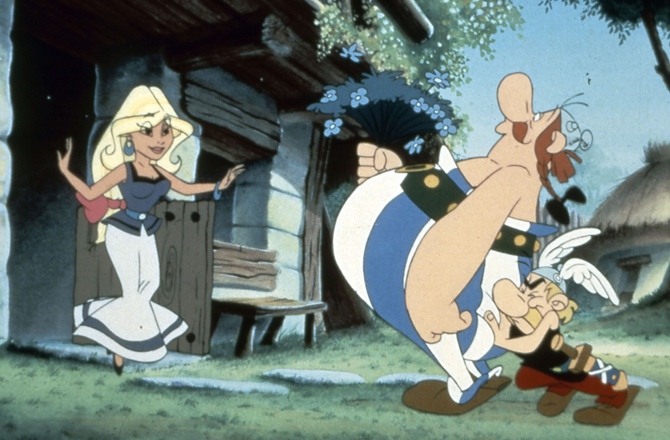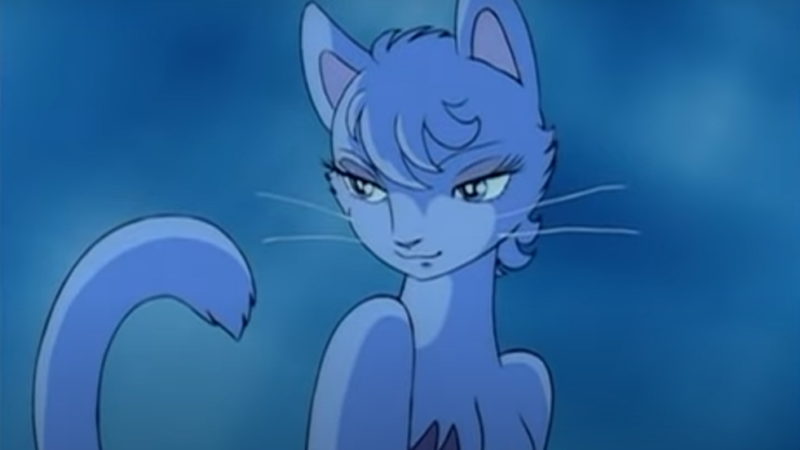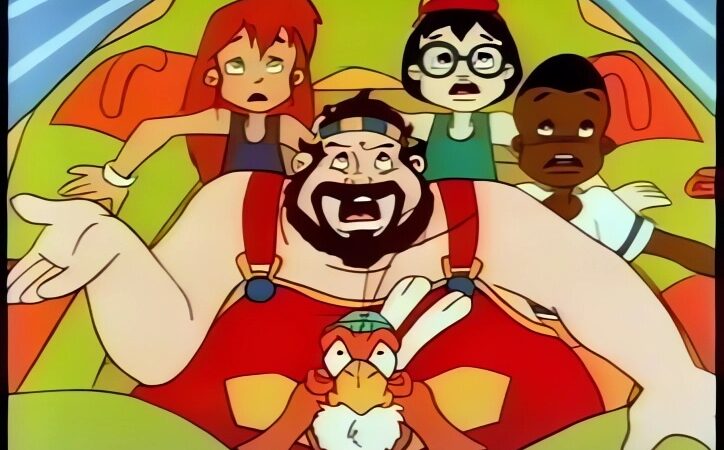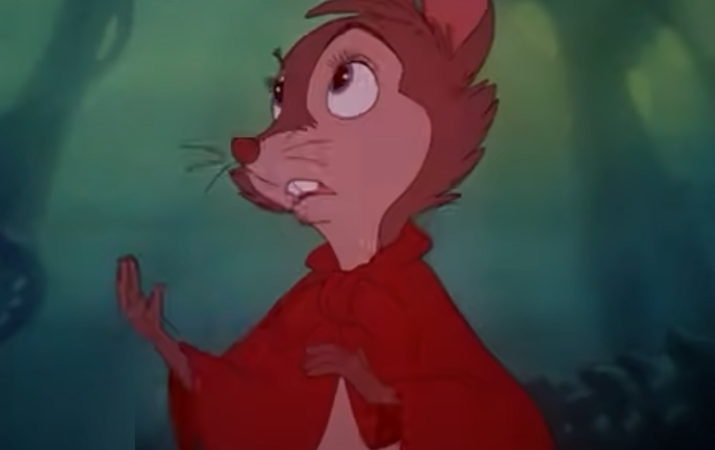Pikachu from Pokémon
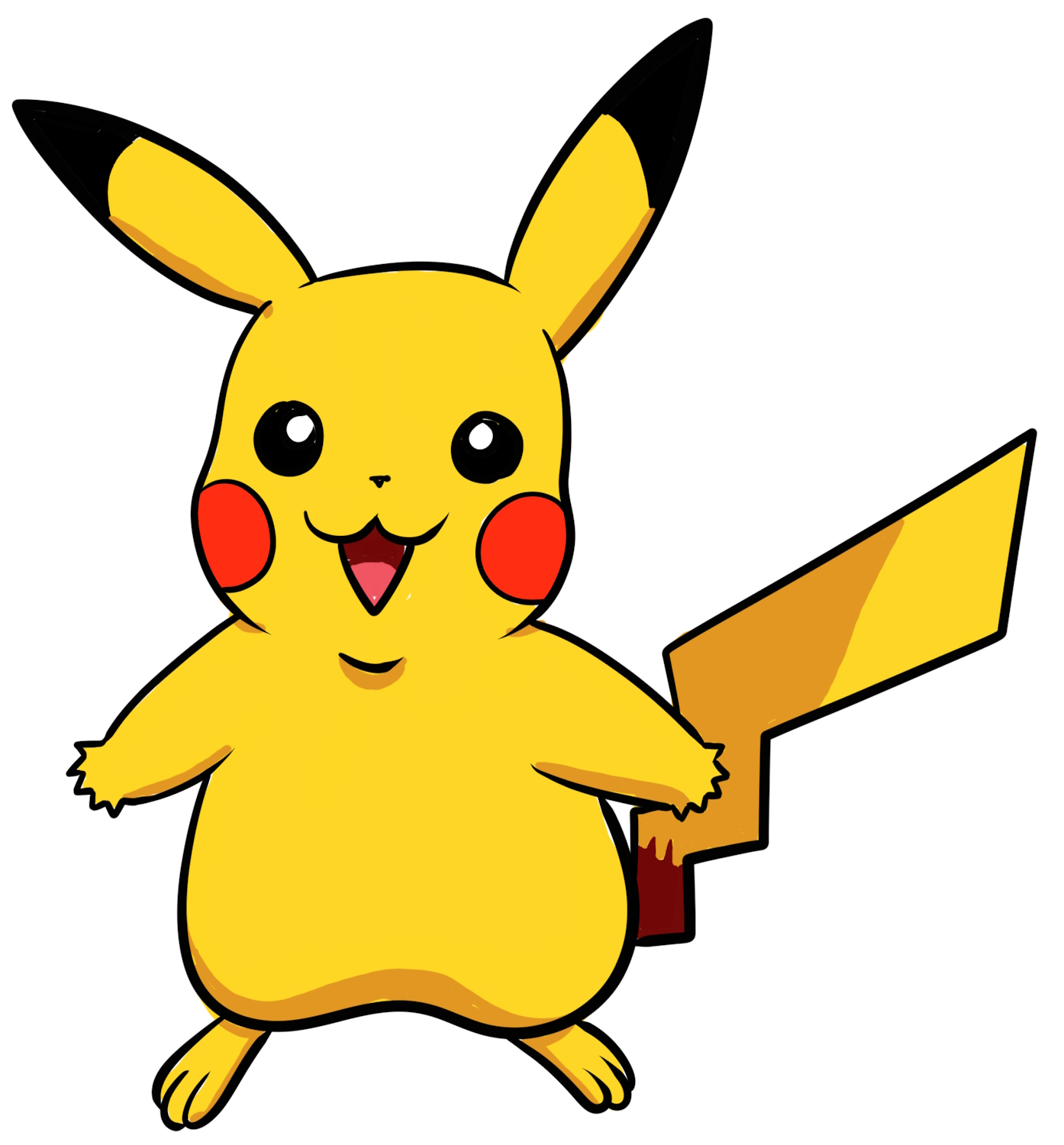
Pikachu is a fictional creature main protagonist of the cartoon and video game series Pokémon . The character was designed by Atsuko Nishida and Ken Sugimori, and first appeared in the 1996 Japanese video games on Pokémon Red and Green, produced by Game Freak and Nintendo. Pikachu has a vibrant yellow coloration and is similar to a mouse with bunny ears. He possesses the power to give off violent electric shocks.
Pikachu is widely considered to be the species Pokémon most popular and known, largely for his appearance in the Pokémon anime television series as a companion to protagonist Ash Ketchum. In 2019 he starred in the animated and live-action feature film Pokémon Detective Pikachu. The film was well received by critics, with particular praise for its sweetness, and has become an icon of Japanese pop culture.
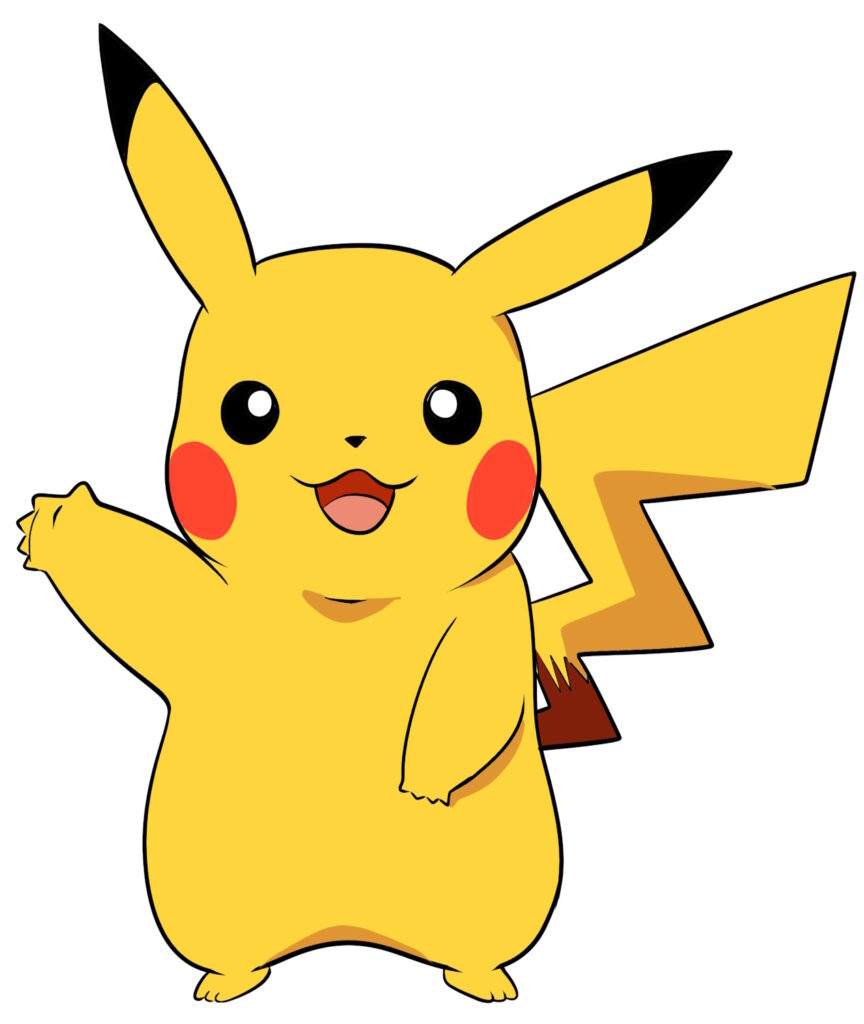
Anime series
Anime series and movies Pokémon present the adventures of Ash Ketchum and his Pikachu, as they travel through the various regions of the Pokémon universe. In their adventures they are accompanied by a group of various friends.
In the first episode, Ash Ketchum, a little boy from Pallet Town, turns 10 and acquires his first Pokémon, a Pikachu, from Professor Oak. At first, Pikachu ignored Ash's requests, frequently shocking him and refusing to be limited to the conventional method of transporting Pokémon, a Poké Ball. However, Ash put himself in danger to defend Pikachu from a flock of wild Spearow, so he took him to a Pokémon Center. Pikachu still refuses to enter the Poké Ball. and displays great power that sets it apart from other Pokémon and other Pikachu. This fuels Team Rocket's desire to capture him and win their leader's favor.
Other savage and trained Pikachu appear throughout the series, often interacting with Ash and his Pikachu. Most notable among these is Ritchie's Pikachu, Sparky (レ オ ン, Reon, Leon). Like most other Pokémon, Pikachu communicates only by saying syllables of its name. In the original version Pikachu is voiced by Ikue Ōtani in all versions of the anime, while in Italy he was voiced by Francesco Venditti. In Pokémon Live! , the musical show adapted from the anime, Pikachu was played by Jennifer Risser.



Video Game
Pikachu has appeared in all Pokémon video games, except Black and White, without having to swap. The Pokémon Yellow game features a Pikachu as the only starter Pokémon available. Based on the Pikachu from the Pokémon anime, it refuses to remain in its Poké Ball and instead follows the main character on the screen. The trainer can talk to him and show different reactions depending on how he is treated. Pikachu also received the ability to learn new attacks such as the Electric-type attack, Lightning, which no other Pokémon could naturally learn.
An event from April 1 to May 5, 2010 allowed Pokémon HeartGold and SoulSilver players to access a path on the Pokéwalker. This only contained Pikachu who knew attacks they weren't normally compatible with, Surf and Fly. Both of these attacks can be used outside of battle as a travel aid. Seven "Cap" forms of Pikachu, which wore hats belonging to Ash Ketchum in different seasons, have appeared on Pokémon Sun and Moon, as well as their Ultra versions.
These games also released two Z-Crystalsin exclusive to Pikachu: Pikanium Z, which boosts Volt Tackle in Catastropika, and Pikashunium Z. In turn, boosts Thunderbolt into 10.000.000 Volt Thunderbolt when held by a Pikachu Cap form.
Pokémon Let's Go, which is heavily based on Yellow, has Pikachu as a starter in one of its two versions, with the latest version using Eevee instead. This starter Pikachu has access to several secret techniques and exclusive moves. Finally, in Pokémon Sword and Shield, Pikachu gained access to a special Gigantamax form that grants him the ability to deal massive damage and paralyze opponents at the same time.
Aside from the main series, Pikachu stars in Hey You, Pikachu! for the Nintendo 64; the player interacts with Pikachu through a microphone, giving commands to play various minigames and act out situations. The Pokémon Channel game follows a similar premise of interacting with the Pikachu, albeit without the microphone. Pikachu appears in almost every level of Pokémon Snap and its sequel, New Pokémon Snap, games in which the player takes pictures of Pokémon for a score. A Pikachu is one of sixteen owners and ten partners in the Pokémon Mystery Dungeon series.
PokéPark Wii: Pikachu's Adventure and its sequel, PokéPark 2: Wonders Beyond, features a Pikachu as the main protagonist. Pikachu appeared in all five Super Smash Bros. fighting games as a playable character, included in Pokkén Tournament, along with "Pikachu Libre," based on Omega Ruby's "Cosplay Pikachu" by Omega Ruby and Alpha Sapphire.
Detective Pikachu features a talking Pikachu who becomes a detective and helps solve mysteries. Pikachu also appears in an online multiplayer game in the Pokémon Unite battle arena.
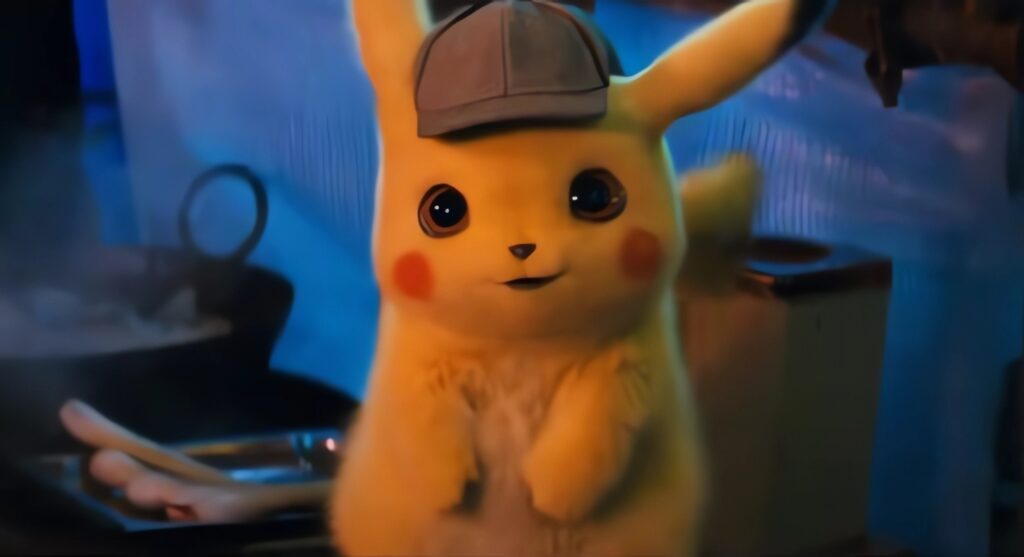


Pikachu has also appeared in Pokémon Rumble World, Pokémon Go, and also puzzle games such as Pokémon Shuffle, Pokémon Battle Trozei, Pokémon Picross, Pokémon Café Mix, and including 2022 Pokémon Legends: Arceus.
The production and invention of Pikachu
In 1996, Japan created a cultural phenomenon that would become a milestone in the world of video games and animation: Pokémon. Behind this extraordinary success lies a yellow and agile creature with an unparalleled charm: Pikachu.
Pikachu's Dawn
The origins of Pikachu date back to the creative minds at Game Freak, while giant Nintendo took care of the publishing. Within the vast Pokémon world, players, known as “trainers,” were tasked with capturing and training these creatures. Among the various Pokémon designs, Atsuko Nishida created that of Pikachu, later perfected by Ken Sugimori. Interestingly, the name "Pikachu" comes from the fusion of two Japanese onomatopoeias: "pikapika", which indicates a sparkle, and "chūchū", similar to the sound of a mouse. Yet, despite the name suggesting a mouse, the inspiration for Pikachu's cheeks actually comes from squirrels.
Characteristics and Evolution
Pikachu, with its short yellow fur, brown streaks on its back and pointed ears, has become the symbol of electrical energy in the Pokémon world. When it comes to defense, these little rodents don't hesitate to discharge powerful electric blasts. Not everyone knows, however, that Pikachu can evolve into Raichu via a Thunder Stone. There was also a later evolution, Gorochu, which was later discarded. To make the evolutionary arc even more complex, "Pichu" was introduced as Pikachu's predecessor, while gender differences, introduced with Pokémon Diamond and Pearl, gave females a heart-shaped tail.
Pikachu: From Console to Screen
Although Pikachu and Clefairy were chosen as the protagonists of the merchandising, it was Pikachu who won the hearts of Japanese children, becoming the face of animation. The choice to make Pikachu the mascot was not accidental: the image of him evoked a familiar pet and the bright yellow was easily recognizable.
Over time, Pikachu's image has undergone slight changes. From the initial chubby figure, we moved on to a slimmer and more proportionate one, to make animation easier. This "chubby" version was revisited with the Gigantamax form in Pokémon Sword and Shield.
Since its birth in the 90s, Pikachu has become a symbol not only for Pokémon, but for the entire pop culture. His history, evolution and cultural impact make him one of the most iconic characters ever created. With each new generation, the legend of Pikachu continues to grow, keeping his sparkling legacy alive.
Pikachu: Critical Echo and Unparalleled Cultural Impact
When we talk about Pikachu, we can't help but think of the icon of Japan's kawaii culture. This little electric creature, a Pokémon that has won the hearts of millions of people around the world, is not just a character from a video game or an anime, but has become a real cultural symbol, like characters like Mickey Mouse .
Critical reception
Pikachu's reception was extraordinary. In 1999, Time magazine ranked Pikachu as the “second best person of the year,” calling him “the most beloved animated character since Hello Kitty.” This statement was not a simple exaggeration: Pikachu represented and represents the public face of a phenomenon that has gone from Nintendo video games to an empire of trading cards. And the recognition doesn't stop there. Pikachu has achieved high positions in surveys and rankings related to animation, video games and cartoons. Even Forbes, in 2003, positioned him as the “eighth most profitable fictional character of the year”.
Yet, like any prominent figure, Pikachu also had his detractors. Some sources criticized his omnipresence, while others called him irritating. However, the harshest criticism could not dim the brilliance of this little yellow Pokémon.
Cultural impact
In addition to its presence in the world of animation and video games, Pikachu has had a significant impact on popular culture. From the “Pikachurin” protein discovered in Osaka, inspired by his agility, to the Chilean policy “Tía Pikachú”, through global protests where Pikachu becomes a symbol of demonstrations, his impact is palpable. Even in the city of New Orleans, a work of art known as “Pokemonument” has appeared as a tribute to the Pokémon Go wave.
In its home country of Japan, Pikachu's image has become synonymous with popularity, so much so that it was used as the official mascot for the Japanese national football team in the 2014 World Cup.
Since its debut, Pikachu has become a phenomenon and an icon of the last 20 years. With his infectious smile and unmatched energy, Pikachu has proven that regardless of criticism or changing trends, his cultural impact and popularity are here to stay. And with the continued growth of pop culture and animation, Pikachu's future looks even brighter.

